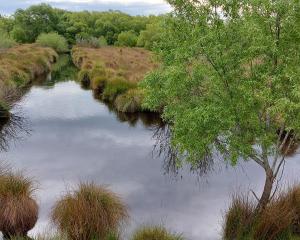There's always so much to see on a trip up the West Coast. Walls of moody trees, sheets of driving rain and the beaches.
Man, the beaches.
One of my highlights has always been a stop at Bruce Bay to fossick among the driftwood for the pearly white stones.
But things have changed there, and I'm not sure it's for the best.
Firstly, there are more cairns there along the roadside than you could shake a posse of very large seals at.
If only that would make a difference.
Do the highway cairn builders not know that these are, historically, road markers? And though it's very kind of them to point the way along the road, there is only one road.
Behind the cairns sit constructed fortresses of driftwood, the sort my kids usually create and destroy in a day.
Further up the coast, we found some of these had been nailed or tied into place to become more permanent.
It's as if the beach itself, or the artful forms of nature, aren't enough.
But it's not the cairns or the fortresses that really irk me.
It's the stone graffiti.
Literally hundreds of those pearly whites have been tattooed by travellers with permanent pens; marking their marriages, their road trips, their memories.
One was inscribed as a memorial to the Pike River miners, another claimed a reconnection with the land.
I came, I saw, I scrawled my name on a stone.
Is this what the West is about? Lest you think I'm taking the moral high ground, I should confess to my own beach graffiti experiences.
In the Cook Islands a couple of years ago, we amused ourselves with a permanent marker and a plethora of hermit crabs, giving each of them three-letter names on their shells.
This was handy because the crabs were small, the marker tips generous and our writing clumsied by the fear of crab nips.
We then followed the habits of the hermit crabs.
There is one memorable photo of a crab called Jim whose favourite pastime was to fool himself that he was small enough to climb inside the neck of a beer bottle. He wasn't.
But that was research, and leaving your name by the side of the road is just territorial marking.
And, potentially, very distracting. According to the NZTA, there is no policy about such land art, although guidelines exist about the size and appropriateness of road-side memorials.
White crosses are OK.
Floral displays and photos are verging on the distracting. But at least there's a meaningful point to the memorials.
Called "descansos" or "resting places" in Spanish, they historically marked the stopping points in transporting coffins, or the last living spots of travellers on a journey.
The irony is that these memorials, as well as warning of danger, can also provide distractions.
But no more or less than so-called land-art edifices on a road that sees enough crashes as it is.
Where's it going to end? Piles of signed stones up at the glaciers? Creative beach-art classes?
The road is enough. Why can't we just enjoy the journey?
- Liz Breslin lives in Hawea Flat.












